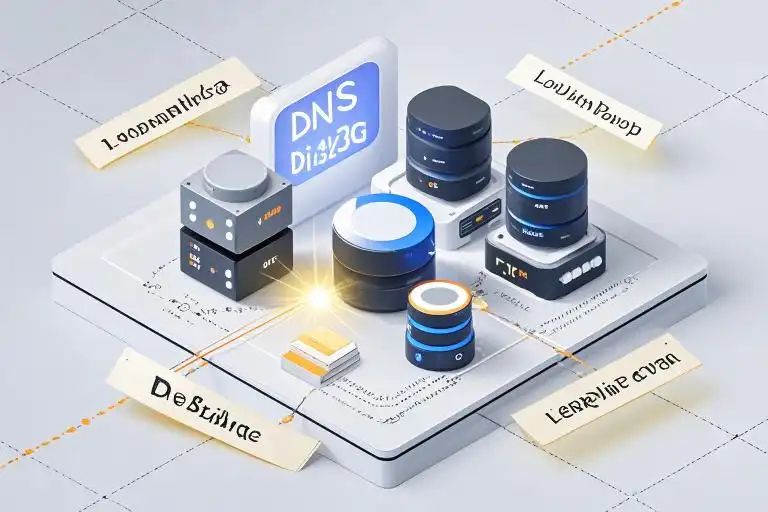You’re handed a box of high-tech LEGO pieces and told to build a Mars rover. Exciting? Absolutely. Overwhelming? You bet. That’s exactly how many developers feel when first tackling system design – endless possibilities, hidden pitfalls, and that nagging fear of “Did I forget something important?”
I’ve been there too. Early in my career, I once designed a chat system that worked beautifully…until 12 users logged in simultaneously. The server melted faster than ice cream in Death Valley. Turns out, I’d completely ignored load balancing. Oops.
But here’s the good news: System design isn’t about being a tech wizard. It’s about having the right mental toolbox. Let’s build yours together.
The 3-Layer Cake Every Developer Should Bake
Think of great systems like a perfect layer cake – miss one tier, and the whole thing collapses. Here’s your recipe:
1️⃣ The Foundation: Traffic Directors
- DNS: Your system’s phonebook (translates “coolapp.com” to server IPs)
- Load Balancers: The bouncer managing club entry lines
- API Gateway: The concierge routing requests to right services
Real-world slip-up: A startup once routed all traffic through a single load balancer. Black Friday sales turned it into a digital traffic jam. Solution? Geographic load balancing – like having multiple store entrances.
2️⃣ The Filling: Data Magic
- Database choice is like picking shoes – NoSQL for sprints (scaling fast), SQL for marathons (complex queries)
- Caching = your brain’s sticky notes (Redis/Memcached)
- Unique IDs matter more than you think – Twitter’s snowflake IDs prevent Christmas morning chaos
Pro tip: Use UUIDv7 – it’s like getting timestamps baked into your IDs for free!
3️⃣ The Icing: Features Users Actually Notice
- Payment systems: The “don’t break Christmas” rule – test fraud detection like you’re testing parachutes
- Recommendation engines: Start simple (“users who bought this also bought…”) before AI magic
- Real-time chat: Choose protocols like WebSocket over HTTP polling – it’s texting vs. sending letters
5 Mistakes That’ll Haunt Your Late Nights (And How to Dodge Them)
- The “Just Add Servers” Fallacy
Scaling vertically is like trying to raise skyscraper ceilings – eventually you hit physical limits. Go horizontal early. - Database Monogamy
Using MySQL for everything? That’s like using a hammer to paint walls. Mix SQL (user data) with NoSQL (activity logs). - Cache Amnesia
Set TTLs (expiry dates) religiously. Forgot? Enjoy serving users yesterday’s news. - The Silent Failure Trap
Implement circuit breakers – they’re like emergency shutoff valves when services go haywire. - Overengineering FOMO
Startups don’t need quantum-resistant encryption. Build MVP first, then add armor.
Your New Best Friend: The System Design Cheat Sheet
Remember cooking shows where chefs have all ingredients pre-measured? That’s what our free blueprint does for developers:
Keep these pinned to your desk:
- When to use REST vs. GraphQL vs. gRPC
- Cache invalidation patterns that won’t make you cry
- The 5-minute disaster recovery checklist
Let’s Build Something Real: A Tiny Twitter
- User Story: “I want to post 280-character messages and see others’ posts.”
- Basic Flow:
- Mobile app → API Gateway (rate limiting!) → Authentication service
- Post storage: DynamoDB (handle explosive growth)
- Timeline service: Redis sorted sets (chronological order)
- Scaling:
- Shard databases by user geography
- Use CDN for profile pictures
- Queue writes during peak times (Kafka/RabbitMQ)
Survival hack: Track “hot” hashtags separately – your servers will thank you during election nights.
Your Next Steps (No PhD Required)
- Download the blueprint – consider it your system design security blanket
- Play “What If?” games with existing apps:
- “How would Instagram handle 10x more Reels?”
- “What breaks first if every Uber ride happened at 5 PM?”
- Join system design challenges – like the #100DaysOfDesign Twitter thread
Remember: Every expert was once the newbie who accidentally DDOS’d their own server. The difference? They kept iterating. So will you.
Ready to turn design headaches into “Aha!” moments? Grab your blueprint and let’s build systems that don’t just work – they sing.
About the author: Jamie (Coffee-powered System Architect) has designed systems handling 18M+ RPM. Still forgets to charge AirPods daily. Connect on Twitter @DesignWizard*




